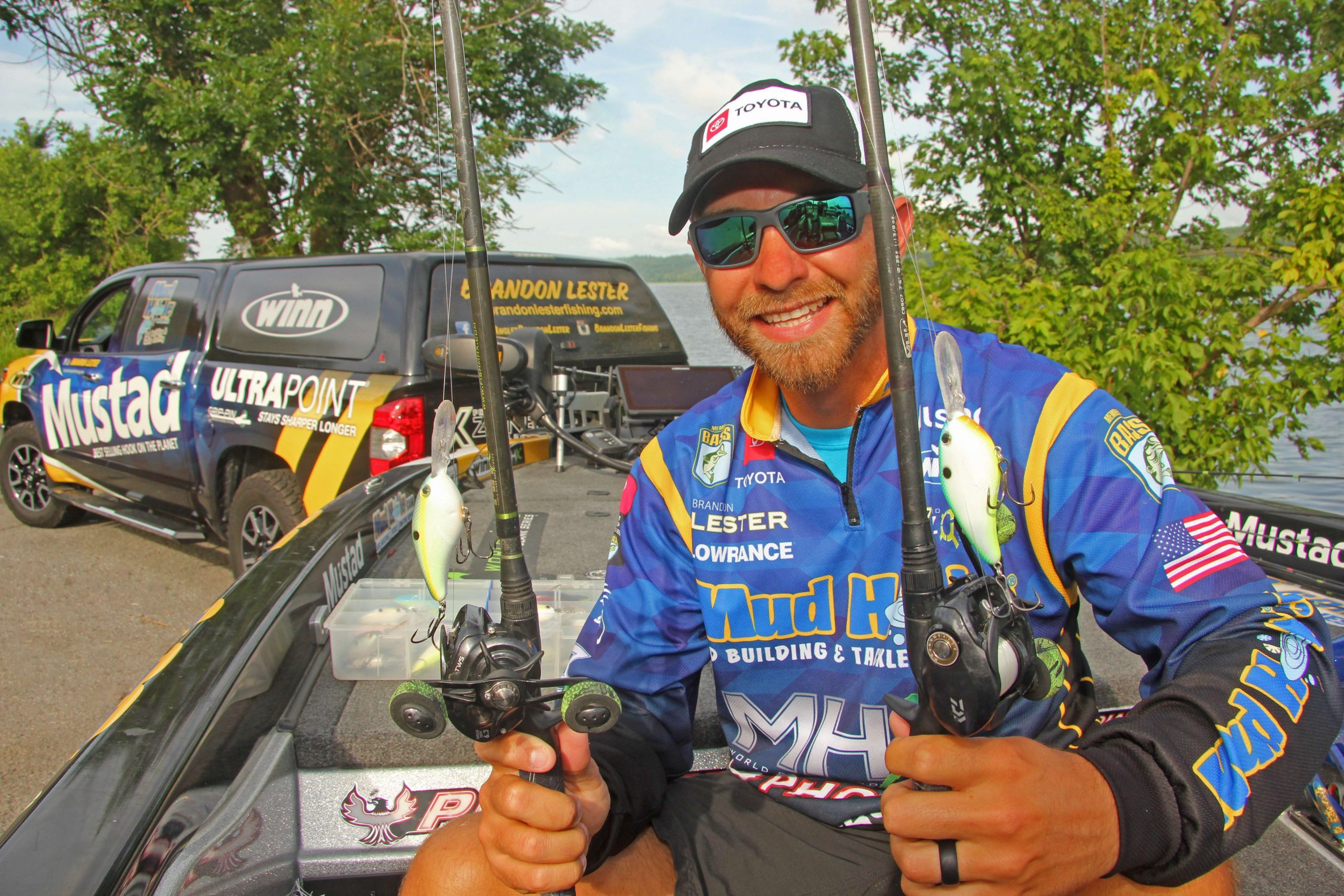
Team Toyota pro angler Brandon Lester considers himself a “No Shoes Nation” kind of guy. Lester lives on the Alabama-Tennessee border, but loves to spend a couple free weeks in the summertime six hours south of home on the sugar white sandy beaches of the Gulf Coast. His time in Orange Beach, Ala., is spent relaxing with his young family and chasing a variety of saltwater species out of the Flora-Bama Marina.
However when it’s time to go to work as a top Bassmaster Elite Series pro in freshwater, few rival Lester’s ability to dredge up summertime largemouth from their deep water haunts on a crankbait. Between recent trips to Lake Guntersville and Orange Beach, he graciously shared four tips that will make you a better deep crankbait angler when water temps are at their warmest.
Be really careful with rattling crankbaits
It’s natural to think a lure that rattles has an increased chance of getting chewed, but Lester says deep divers that rattle are best used in moderation.
“I use a rattling crankbait a lot more in May and June when the fish first go deep, but by July and August, once they’ve been pressured for a couple of months, I prefer the silent crankbaits,” says Lester. “I’ve seen good schools of fish run for the hills purely because of fishing pressure, so be really careful not to overuse rattles, or you might spook a good school.”
Two of Lester’s favorite colors
“Day in and day out, Citrus Shad is my #1 favorite summer crankin color. But again, once the bass have seen a lot of baits by midsummer, you may want to reach for something a little subtler like Green Gizzard, “ he warns.
He says his color selection is based more on fishing pressure and water clarity than cloud cover. “Clouds versus sun isn’t a huge determiner of what color I tie on. It’s more about using natural colors like Green Gizzard in clearer waters, or at times when bass are getting pressured, but if you’re only choosing one – Citrus Shad is hard to beat, especially if the water is a little dingy.”
Line size
“I use 10-pound Vicious Pro Elite fluorocarbon about 60 percent of the time, and I’ll bump up to 12-pound line if I’m cranking around a lot of rocks or shell beds, but most of the time I like 10-pound test to maximize the depth of the lure, as well as its action,” says Lester, who fished in college for the University of Tennessee at Chattanooga.
Speed of retrieve is super important
“One of the biggest keys to spurring strikes with a deep crank is to burn it through the strike zone. Water temps are plenty warm. A bass can catch anything that swims when the water is warm, and a fast moving bait makes them react instinctively,” says Lester, who winds the reel handle as fast as possible with a 6.3:1 gear ratio reel.
Based on recent social media photos Lester posted, his ability to catch red snapper from 80 feet of water eight miles out in the Gulf of Mexico is pretty strong too.
But when it comes to cranking for largemouth bass in that somewhat magical 14- to 18-foot depth range where summer bass often call home, take note of these four quick tips he shares, and you’re sure to become a little more salty in your cranking game too.





